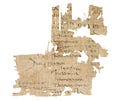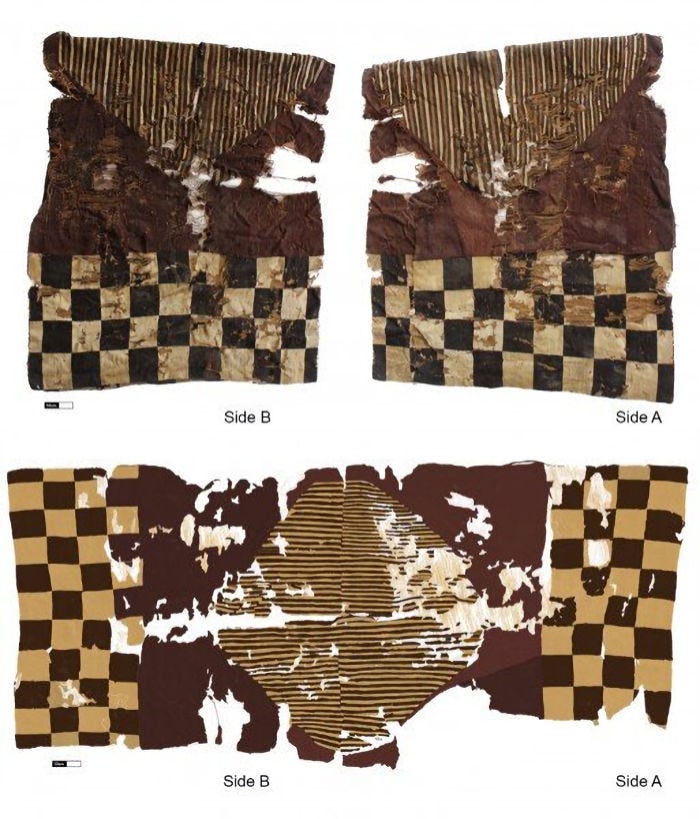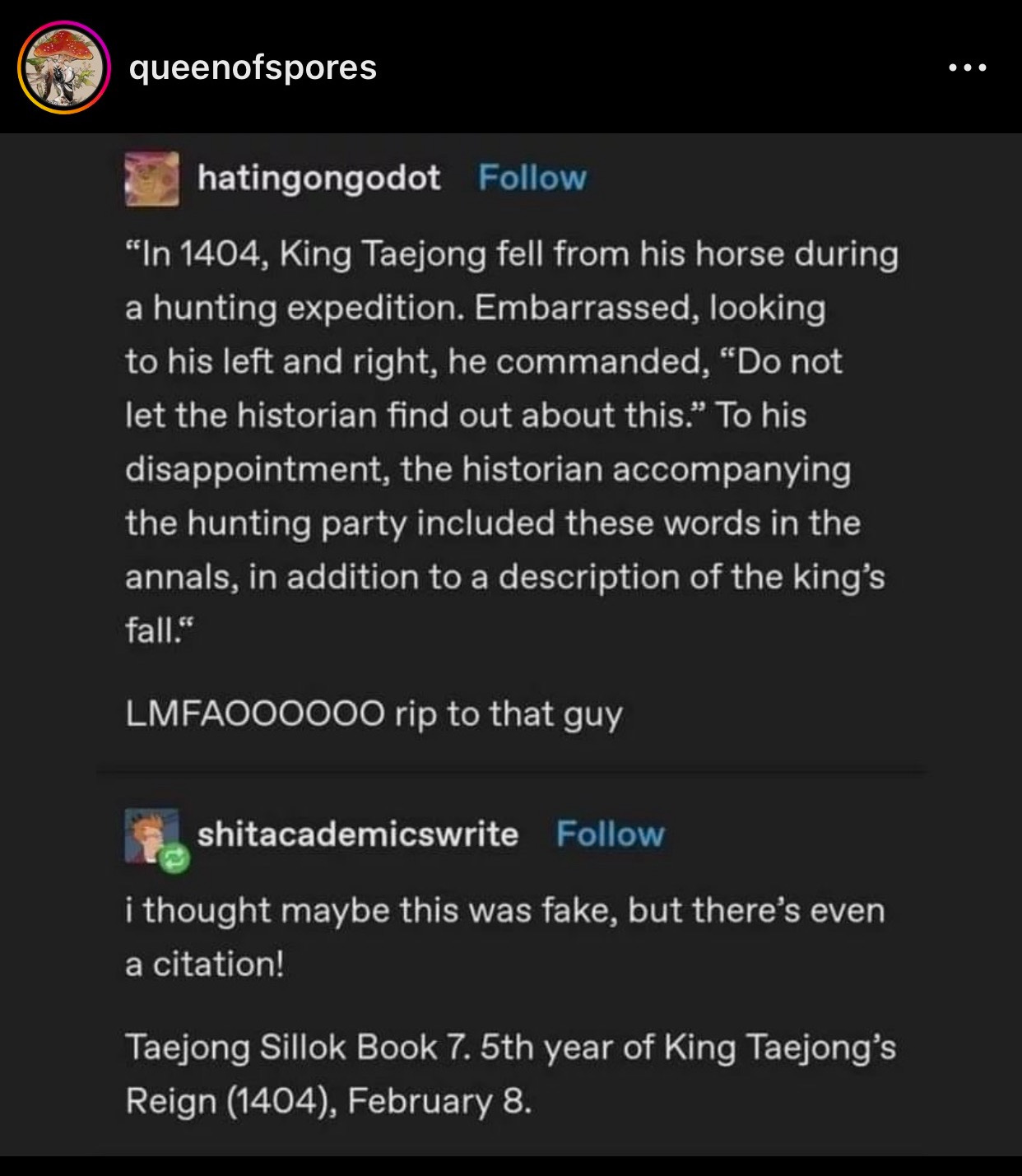🧐 Ancient Beat #48: Medicine horns, legionary paychecks, and Oldowan-tool-wielding Paranthropuses
Hi folks, welcome to issue #48 of Ancient Beat! Ready to learn a thing or two about the human story? Here’s the latest ancient news. 👇
🗞 Ancient News: Top 5
We Found 2.9-Million-Year-Old Stone Tools Used to Butcher Ancient Hippos—but Likely Not by Our Ancestors — Over 300 Oldowan stone tools were discovered on the Homa Peninsula of Kenya. This was an extraordinary find for a number of reasons, so buckle up. The tools are 2.9 million years old, making them the oldest Oldowan tools ever found by about 300,000 years. They’re also some of the oldest-known stone tools that were used in the butchering of large animals (and the pounding of plants) — in this case, hippos. And that makes this the oldest known example of hominins eating meat (probably raw since it’s from before the oldest accepted evidence of fire), changing the way experts view carnivory among hominins. That’s all pretty impressive, but here’s the kicker: The only hominin remains found at the site were two molars from the genus, Paranthropus. These remains are the oldest remains of our early cousins ever found. And finding them in the same place as these tools suggests that they used them — until now, it was thought that only our direct ancestors (Homo) used Oldowan tools. In fact, this technology was once considered a marker for the beginning of human modernity. So yeah, not a bad haul by those archaeologists!
Rare Ancient Paycheck Of A Roman Legionary Soldier Found At Masada — A rare papyrus was discovered in Masada, Israel. It’s the paycheck of a Roman legionary soldier dated to 72 CE, during the period of the Great Revolt. It’s worth noting that this is a different Great Revolt from the one I covered in the last issue — this one was a revolt of the Jews against the Romans. Anywho, this is one of three paychecks ever discovered in the Roman Empire, and it includes some interesting info. It details the soldier’s salary over two pay periods (there would have been three periods per year), and includes deductions for boots, a linen tunic, and barley fodder for his horse. Basic equipment would have been covered by the Empire, but apparently, these items weren’t quite basic enough (who needs boots or a shirt, am I right?). The deductions almost exceeded the soldier’s salary, which begs the question, “Why enlist?” From a monetary perspective, apparently looting and various other side-hustles often made it worth their while.
Archaeologists in Northern Mexico Shed New Light on Ancient Huastec Burial and Construction Practices — A series of circular mounds has been discovered at the site of El Naranjo in Mexico. Two of the mounds have been excavated, revealing a dozen burials from between 600 and 900 CE. The burials were in keeping with the Huastec cultural tradition. One of the mounds is 20 meters in diameter, and was built with limestone and basalt masonry which must have been transported a long distance. It contains the remains of three adult individuals with obsidian blades, green quartz earrings, and shell ornaments in the shape of flowers. Also found in the mounds were hearths, ceramics, grinding stones, and projectile points, all of which indicate that the mounds were used not only for burials, but for daily activities as well. The discovery sheds light on Huastec burial and construction practices.
Book of Revelation Has Terminology Similar to Ancient Curse Tablets — A research project has been investigating the overlap between the tradition of curse tablets and the Bible’s Book of Revelation. They’ve found that the wording used in curse tablets is very similar to those of Revelation. According to Michael Hölscher, “It is possible that those who read or listened to the words of the Apocalypse of John could readily have seen whole passages, single phrases, or concepts in the light of curse spells.” Curse tablets have come up a lot in the past few months, with new examples being found. And then there’s this post. 😂
500-Year-Old Horn Container Discovered in South Africa Sheds Light on Pre-Colonial Khoisan Medicines — A couple of years ago, a 500-year-old cow horn with a leather lid was discovered in Misgund, South Africa, carefully wrapped in grass and leaves. Inside the horn was the residue of an unknown liquid. Well, according to recent chemical analysis, the horn was a medicine container — the earliest known object of its kind in southern Africa. The scientists identified several secondary plant metabolites, including mono-methyl inositol and lupeol, both of which are known to have medicinal properties, including control of blood sugar and cholesterol levels, and the treatment of fevers, inflammation, and infections. The area where it was found would have been occupied by both San hunter-gatherers and Khoi pastoralists. Interestingly, both believed in a mythical animal like a cow that had medicinal horns.
That’s it for the free Top 5! If you’re a free subscriber and you’d like to read another 18 stories and 5 recommended pieces of content covering mastodon hunting, Chichen Itza, decoded letters from Mary Queen of Scots, petroglyphs, the city of Tenea, WF16, a newly discovered First Nations settlement, the origins of humanity, and more, sign up for the paid plan below. And if you want access but it’s a little too steep for you right now, just shoot me an email. 😃
🗞 Ancient News: Deep Dive
Ice Age American Indians Ate Mastodons, Dogs in Southern Ontario — Chemical analysis of spear points and other tools indicates that First Nations people of Ontario, Canada butchered and ate proboscideans (mammoths or mastodons) 13,000 years ago, though it’s not clear whether they killed or scavenged them. They also killed canids (probably domesticated dogs), possibly in a ritual context or for food. Interesting news, so soon after the bone spear point that I covered in last week’s issue, which was stuck in the rib of a mastodon.
Neanderthals Lived Much Longer In Gipuzkoa Than Previously Thought — Reanalysis of teeth found at the Lezetxiki site of Spain has confirmed that they belonged to Neanderthals. This is important, because the layer where the teeth were found, which was originally thought to be from the Mousterian industry of stone tools (46,500+ BP) associated primarily with Neanderthals, was actually found to have Aurignacian artifacts as well. This muddied the waters a bit and put the classification of “Neanderthal” into question until now. The find is significant because it confirms a Neanderthal presence much later than previously thought in the northern Iberian Peninsula.
Major Archaeological Discovery Of A 7,000-Year-Old Settlement In Miami – But Its Future Is In Danger — 7,000-year-old artifacts have been uncovered on the Miami River in Miami, Florida, USA. The artifacts include tools, spearheads, structures, and human remains indicating ritual burials. Thanks to this discovery, it appears that the capital of the Tequesta tribe, which was responsible for the nearby Miami Circle, was larger than originally thought. Folks are trying to preserve the site in the face of a strong push to continue the development of residential towers.
At Mexico's Chichen Itza Site, Researchers Discover Ancient 'Elite' Residences — Until now, there were no known residential groups at Chichen Itza in Mexico. But a complex was discovered that includes an entrance arch, the House of Snails, the House of the Moon, and the Palace of Phalluses (couldn’t make that up if I tried). It is thought to have housed the elite of the city, which was founded in the 5th century CE, making it “the first residential group where a ruler lived with his entire family.” The discovery should shed new light on life in the ancient city.
Lost Secret Letters of Mary, Queen of Scots, Found and Decoded — Researchers discovered 57 letters written in cipher, which had been mislabeled and lost. These encoded letters, which were written by Mary, Queen of Scots, have now been decoded. The letters are from between 1578 and 1584. Most of the letters were addressed to France’s ambassador to England, Michel de Castelnau Mauvissiere. In it, the Queen writes using feminine forms and refers to her “son” (Scotland), captivity, and Francis Walsingham, who was Elizabeth I’s principal secretary and spymaster. Walsingham is thought to have entrapped Mary into supporting the failed assassination of Elizabeth.
Archaeologists Found Evidence of Trepanation on Medieval Woman’s Skull — Analysis of the skull of a woman who lived in medieval Italy revealed that she underwent two procedures consistent with trepanation, where a hole is drilled into the skull. According to Ileana Micarelli, “We found that the woman had survived several surgeries, having undergone long-term surgical therapy, which consisted of a series of successive drillings.” It’s not clear why she received this risky and invasive surgical procedure.
Archaeologists Find Spices from Around the World in Medieval Norse Shipwreck — Containers holding 3,000 well-preserved specimens of plant material were found on a Norse shipwreck from the 1400s. The ship, which belonged to the Danish King Hans, caught fire and sank while docked. It was filled with luxury goods that were to be used in negotiations with the Swedish ruler, Sten Sture the Elder. The plants included almonds, ginger, saffron, and peppercorns, along with spices like cloves, mustard, dill, and nutmeg. Notably, some of the spices originated in faraway Indonesia, which indicates an extensive trade network. Apparently, the spices are so well preserved (thanks to oxygen depletion via marine algae) that some spices still carry a scent.
3,000-Year-Old Milk Residue Found in Tibet — Traces of milk have been identified on pottery sherds at the Gongthang Ruin site on the Tibetan Plateau. According to Yang Xiaoyan, “It may imply that on the Tibetan Plateau, the development of milk as a secondary product occurred at the same time as the utilization of primary animal products, such as meat.”
Cache of Artifacts Uncovered at Harriet Tubman’s Birthplace — Artifacts, including glass, a button, and metal nails, were discovered in Maryland, USA. They are thought to have made up a West African “spirit cache”. Notably, it was discovered on land where Harriet Tubman’s father once lived.
Bronze Age Burial Found in Romania — Remains dating to 3,000 years ago were found in a burial mound in Romania. The mound may have been the work of the Yamnaya culture. Red ochre was found on the skull and leg bones.
Cave Where Generations Hid for 6,000 Years Found in West Bank — Researchers found 27 coins and some pottery sherds in el-Janab Cave in the West Bank. One of the coins is thought to be evidence of Muslim refugees fleeing Mongol forces as they headed to Egypt before being defeated by the Mamluks in 1260. The location of the artifacts (in hard-to-reach chambers), the absence of furnishings, the inconvenient access to the cave, and other factors led the researchers to believe that this was a hiding place. The safe haven may go back as far as 6,500 years, as evidenced by some of the artifacts found.
English Civil War Find Discovered Next to the Parking Lot of Hartlebury Castle — Crop marks were discovered near Kidderminster, England. It may indicate that there was a fortification there during the English Civil War. This is the second find in recent weeks regarding the English Civil War (see issue #45). They believe a bastion with a cannon was located there.
Did Archaeologists Find a 1684 Scottish Settlement Under Beaufort? The results Are In — A 17th-century Scottish settlement known as Stuarts Town has now been placed in downtown Beaufort, South Carolina rather than Spanish Point, where it was originally thought to be. The new location is “conclusive” thanks to the pottery found on site.
Prehistoric Rock Paintings Found in Telangana’s Yadadri District — Rock paintings depicting bulls, a porcupine, antelopes, and human figures in red ochre were found in a “serpent-hood-shaped” rock shelter near Pyararam village in India. They date back to Mesolithic and Neolithic periods.
Rare And Well-Preserved Inca Tunic Discovered In Chile — A well-preserved tunic, or unku, was discovered at a burial site in northern Chile. Unkus were standardized garments that met technical and stylistic specifications imposed by authorities. But this particular unku also has subtle cultural flair that would have been unique to the wearer’s indigenous culture prior to the Inca conquest. This gives us some insight into provincial life in South America about 500 years ago.
Neolithic Ruins Discovered in North China — The ruins of two homes dating to the middle period of the Yangshao culture, 5,500 years ago, were found in Fenyang, China, at the site of the Yuancun Ruins. The buildings were both over 30 square meters. Pottery and a grindstone were unearthed within.
Stone-age Carvings Found in Aravalis in Gurugram — Carvings that are at least 10,000 years old have been discovered in Badshapur Tethar, India. The petroglyphs feature carved hand prints, footprints, and paw prints, as well as some symbols. They are located a few miles from Paleolithic cave paintings that were discovered in 2021. Experts say that the carvings may be territorial, or they could have been used for record-keeping, ancient games, etc. There are multiple images in the article if you’d like to take a look.
Ancient City of Tenea Built by Trojan Prisoners Reveals More Archaeological Secrets — The city of Tenea was built by prisoners of the Trojan war around 1100 BCE in southern Greece. It then disappeared until the ruins were discovered in 2018. Recently, excavations have unearthed a large public building with votive figurines which were probably ceremonial objects for cults, rituals, and ceremonies. Other items found over the last few years include roughly 2,100 coins, paved streets, Roman baths, furnaces, tanks, a cistern, a burial monument, a monolithic sarcophagus, and much more.
❤️ Recommended Content
Let’s take a break from the one-star archaeology reviews this week and get our jollies elsewhere instead. My wife found this little tidbit posted on instagram and it cracked me up. That guy either took his job very seriously, or he had a big bone to pick. 🤣
Here’s an interesting article about the enigmatic Lapis Niger, an important shrine in Rome that dates to at least the 9th century BCE.
Here’s a video about the 11,300-year-old settlement in the Southern Levant known as WF16, which included 30 structures and one special-purpose megastructure.
Have a look at these photos of some previously unknown sections of a mural at the Huaca Pintada (painted temple) in Illimo, Peru.
And here’s an interesting article about the origins of humanity, and how the picture is always changing with new findings. One little tidbit that I found counter-intuitive and fascinating in relation to semi-isolated hunter-gatherers is this: “… In the fully connected population, innovations spread one step at a time. But in the real hunter-gatherer networks, the combination of periods of isolation and episodes of connectivity allowed new discoveries to develop in parallel in small clusters. These innovations could then be recombined, ultimately resulting in the much faster creation of complex culture… Scientists are starting to realize that what researchers used to see as products of “cognitive revolutions”—such as the widespread shift some 300,000 years ago from clunky, handheld stone tools to more refined blades and projectile points—were probably instances of different populations with distinctive cultural and biological features coming together and recombining their genes and ideas.”
That’s it for now. As always, let me know your thoughts!
And until next time, thanks for joining me.
-James
(newish twitter: @jamesofthedrum)
P.S. If you like what you’re seeing, please consider forwarding it to a friend. It would mean a lot! 🙏






